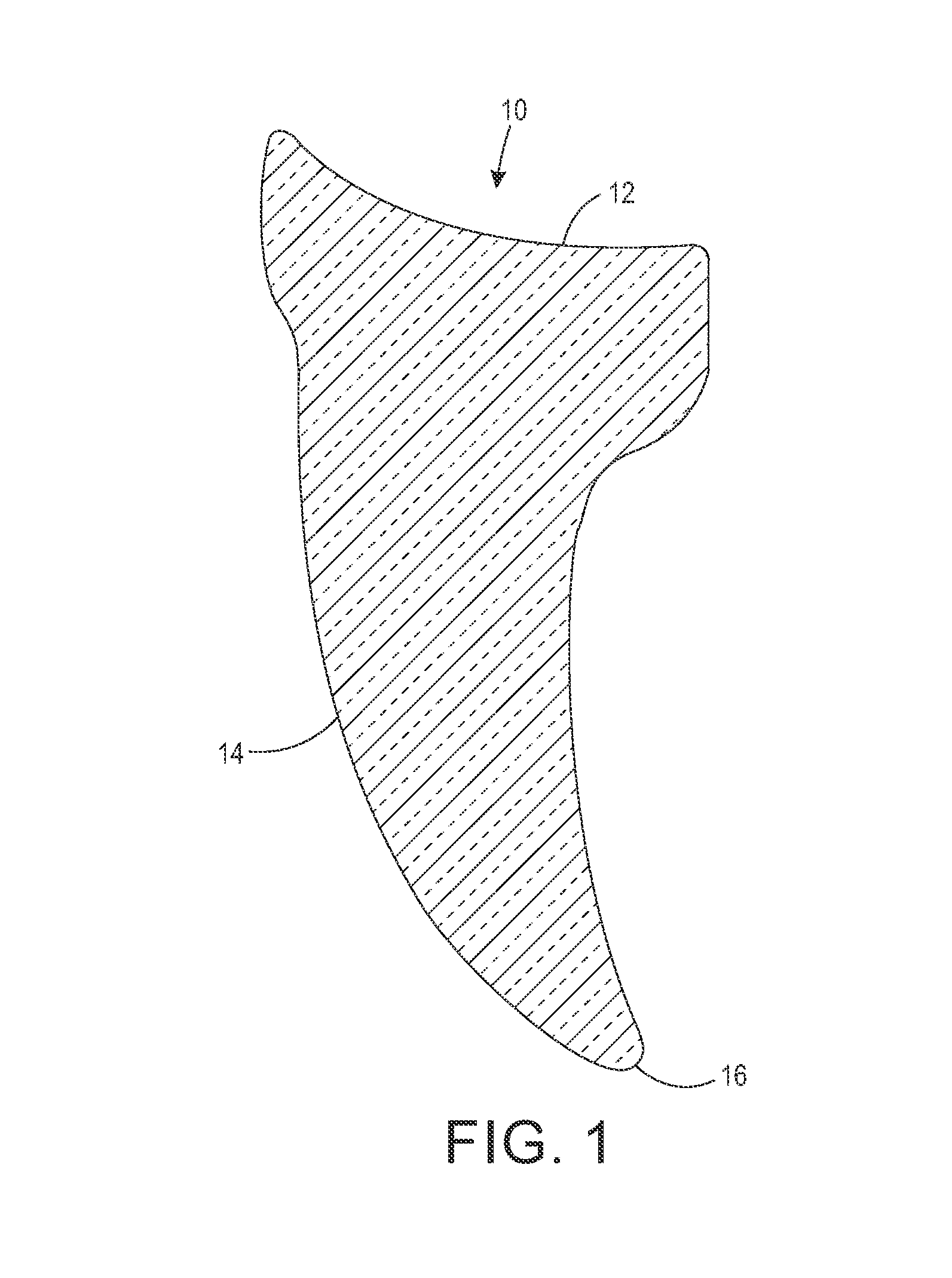Precision-milled denture teeth and method and devices for making same
a technology of denture teeth and milling machines, which is applied in the field of precision-milled denture teeth and methods and devices for making same, can solve the problems of high labor intensity of above process, potential processing errors, and high labor intensity of manufacturing dental prostheses, and achieve the effect of improving the occlusion of teeth
- Summary
- Abstract
- Description
- Claims
- Application Information
AI Technical Summary
Benefits of technology
Problems solved by technology
Method used
Image
Examples
Embodiment Construction
[0047]For a general understanding of the present invention, reference is made to the drawings. In the drawings, like reference numerals have been used throughout to designate identical elements. In the following disclosure, certain components may be identified with adjectives such as “top,”“upper,”“bottom,”“lower,”“left,”“right,” etc. These adjectives are provided in the context of the orientation of the drawings, which is arbitrary. The description is not to be construed as limiting the methods and apparatus disclosed herein to use in a particular spatial orientation. The instant methods and apparatus may be used in orientations other than those shown and described herein.
[0048]As used herein, the term or acronym “CAD-CAM” refers to Computer Aided Design and Computer Aided Manufacturing. Depending upon the context of use, the term may be referring to a computer software program for the design of an article such as a tooth or denture, or a computer software program for the manufactu...
PUM
| Property | Measurement | Unit |
|---|---|---|
| Flow rate | aaaaa | aaaaa |
| Elastomeric | aaaaa | aaaaa |
| Adhesivity | aaaaa | aaaaa |
Abstract
Description
Claims
Application Information
 Login to View More
Login to View More - R&D
- Intellectual Property
- Life Sciences
- Materials
- Tech Scout
- Unparalleled Data Quality
- Higher Quality Content
- 60% Fewer Hallucinations
Browse by: Latest US Patents, China's latest patents, Technical Efficacy Thesaurus, Application Domain, Technology Topic, Popular Technical Reports.
© 2025 PatSnap. All rights reserved.Legal|Privacy policy|Modern Slavery Act Transparency Statement|Sitemap|About US| Contact US: help@patsnap.com



